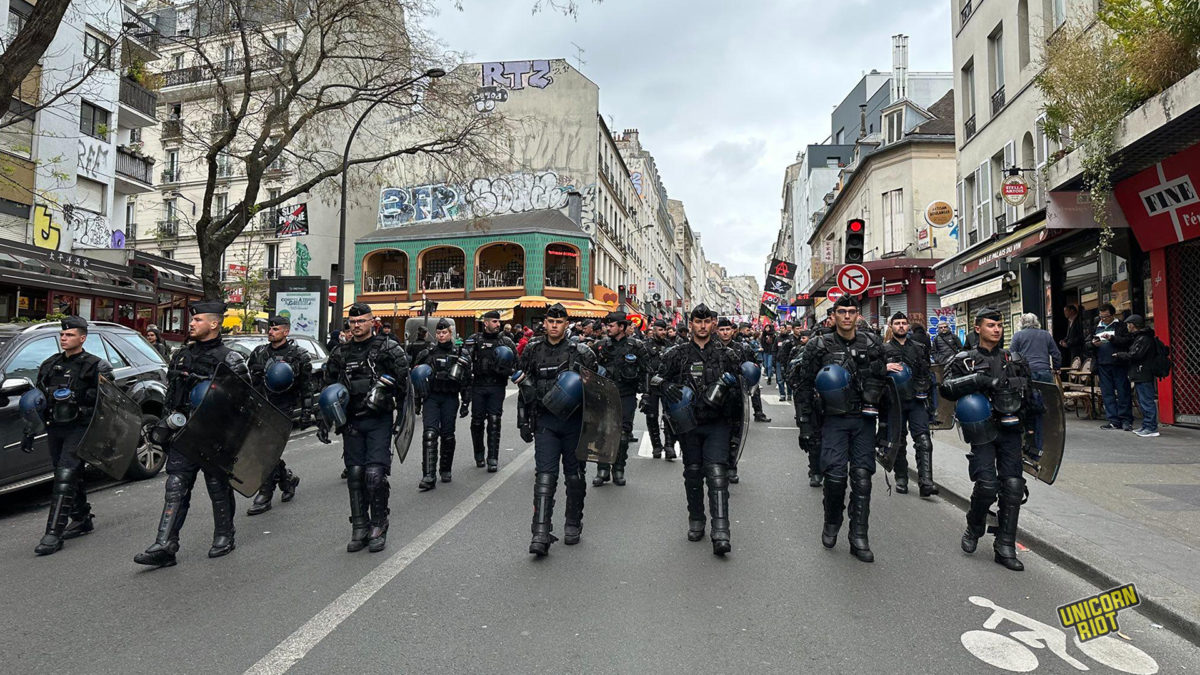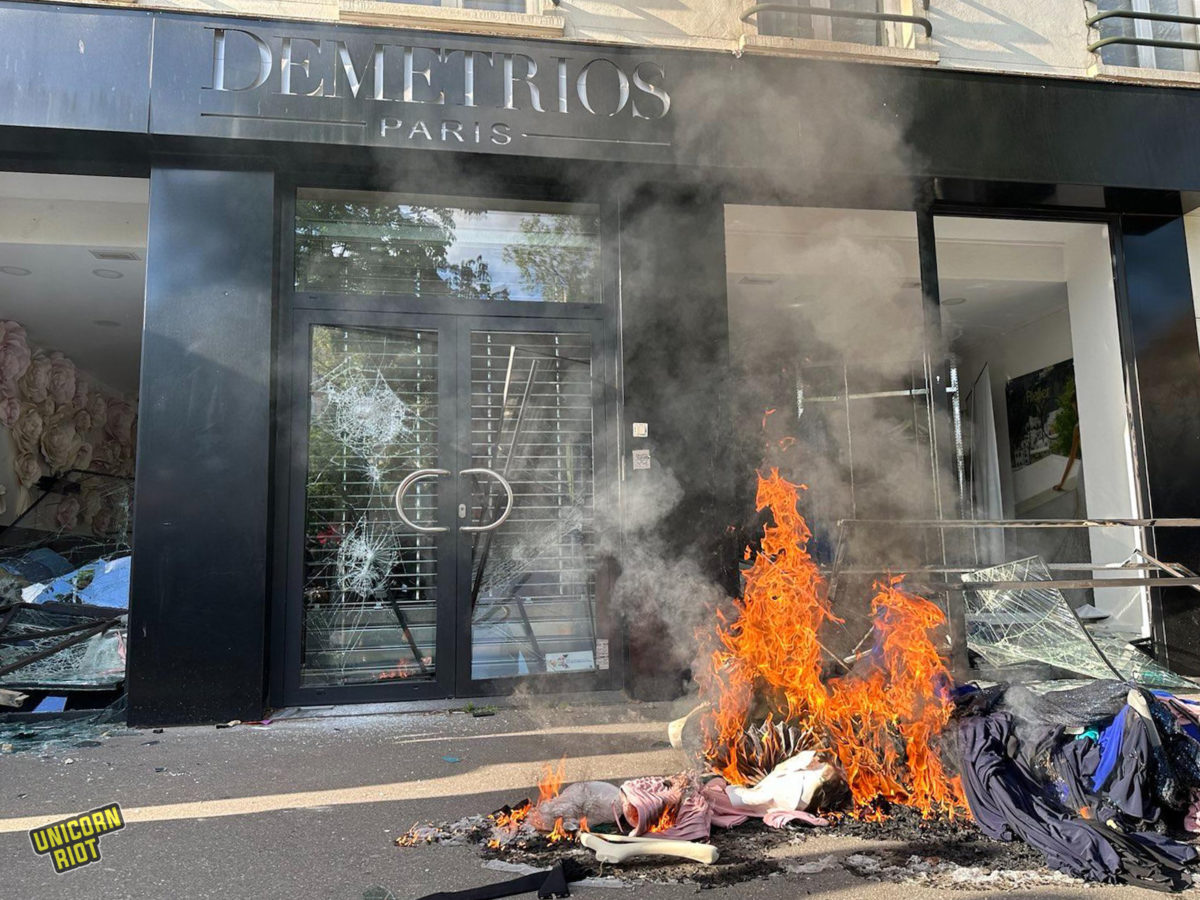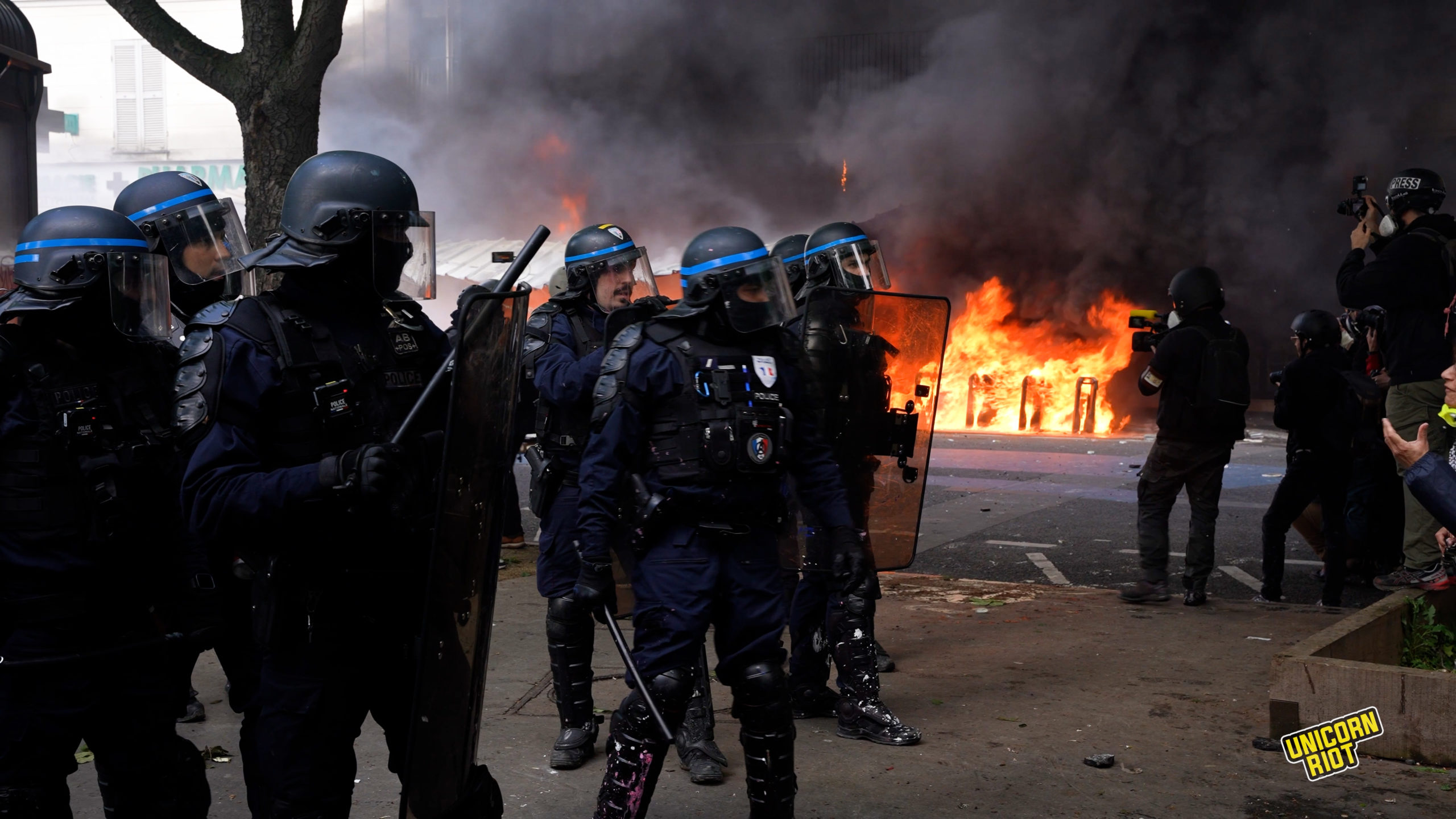May Day Riots Against Pension Reform in Paris
Renewed clashes in France are a continuation of the anger against President Macron’s government.
Paris, France — May Day in France this year was dominated by the ongoing protests against pension reform. While the government had been hoping that the movement — which has been going on for three and a half months — would run out of steam and gradually fade out, the unions, left-wing, anarchist and autonomous organizations wanted to prove with their mobilization that the resistance was unbroken and heads toward new frontiers.
According to the organizers, 2.3 million people took part in the demonstrations throughout France, 550,000 of them in Paris alone — for a May Day, this is a great success. It’s near the peak of the twelve coordinated action and strike days against the reform starting on March 7, when a total of 3.5 million people took to the streets.
Even the prognosis of the state, 500,000 to 650,000 people marching in France, including 80,000 to 100,000 in Paris, was exceeded, with 782,000 demonstrators according to the Ministry of the Interior, including 112,000 in the capital, Paris.
The authorities deployed 12,000 police officers on May 1, 2023, with 5,000 in Paris alone. Nevertheless, it was unable to pacify May Day.

Masked activists were at the head of the demonstration which started in the Place de la Republique, trying to form themselves into groups of black bloc to attack the police and capitalist symbols. The riot police intervened violently by often blocking large groups of demonstrators all along the route.
The motorized forces of the Brav-M charged at their targets whenever they could. The demonstration ended in Place de la Nation, where many activists managed to gather in compact blocs, putting up a fierce resistance against the police repression and violence.
Anarchists, radicalized “Yellow Vests” (the big social movement which hit France in 2018) and many others were fighting for hours, armed with stones and fireworks. Later in the night, the so-called “manifs sauvages” (wild demonstrations) took place around the Place de la Opera, where barricades were erected and garbage bins burned down.
Related: The French People Battle Pension Reform in Paris
Also in Rennes, Lyon, Nantes and other cities, there were riots, arson and clashes with the police. “A new level of violence has been crossed,” lamented Prime Minister Elisabeth Borne the day after the protests, during questions to the government at the French Parliament.
In Paris, the police prefect, Laurent Nunez, warned before the protests that a nebula of 3,000 to 6,000 “radical elements” and “that they will be reinforced by militants from all over Europe.” The intelligence service of the capital feared that young people from sensitive neighborhoods would join the violent actions. Even before the beginning of the demonstration, there were a reported 2,740 stop and frisks by the police where they checked IDs and searched people for weapons.
Macron had used a constitutional trick to push through the increase in the retirement age from 62 to 64 without a vote in parliament and narrowly survived a vote of no confidence. According to opinion polls, the vast majority of the French reject the pension reform. Macron’s approval ratings have fallen close to the record low seen during the crisis period of the “Yellow Vests” protests. The president and his government argue the reform is necessary to prevent France’s generous pension system from collapsing. The unions, on the other hand, believe that this can be achieved by other means, such as higher taxes on the rich or far-reaching changes to the pension system.
Bastien Uitsice, the secretary general of CNT (Confédération Nationale du Travail) Paris, a French anarcho-syndicalist union, previously told Unicorn Riot during a mass demo on March 28 the unions had been mobilizing and organizing marches against the pension reform bill: “From the beginning, the mobilization and marches were formed by the unions with the aim of not passing the bill. But the bill was passed by force, and this bill increases the working time and also decreases the value of labor.” See our video coverage of the late March riots in Paris below.
Since January, France has been on fire. Millions of people have been taking to the streets every week, blocking train stations and highways, confronting the police and attacking the symbols of the state and capitalism.
Perhaps the most interesting element of this movement in its duration and radicalization, is its very high level of internal composition. From the experience of the Yellow Vest movement, which was autonomously organized, the unions had this time to demonstrate their continuous presence and determination not to back down in front of Macron and his allies. This allowed the demonstrations to grow through the months and develop to maybe the biggest social movement of recent years.
As Macron insists on authoritarian practices, and only one year has passed since his re-election, the debates have started among the progressive milieus on how to continue pressure against the neoliberal monolith, and seek another future. In the meantime, the unions have announced a new day of strikes and demonstrations on June 6.

For more Unicorn Riot coverage on France, see our archives. Watch our recently released interview with a member of the radical independent media collective Cerveaux non Disponibles (CND).
Follow us on X (aka Twitter), Facebook, YouTube, Vimeo, Instagram, Mastodon, Threads, BlueSky and Patreon.



